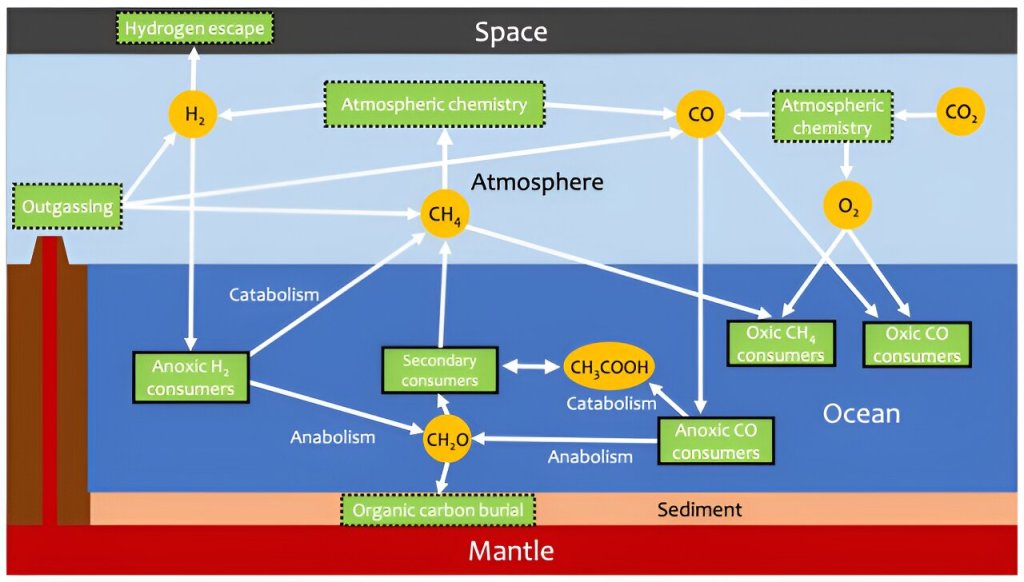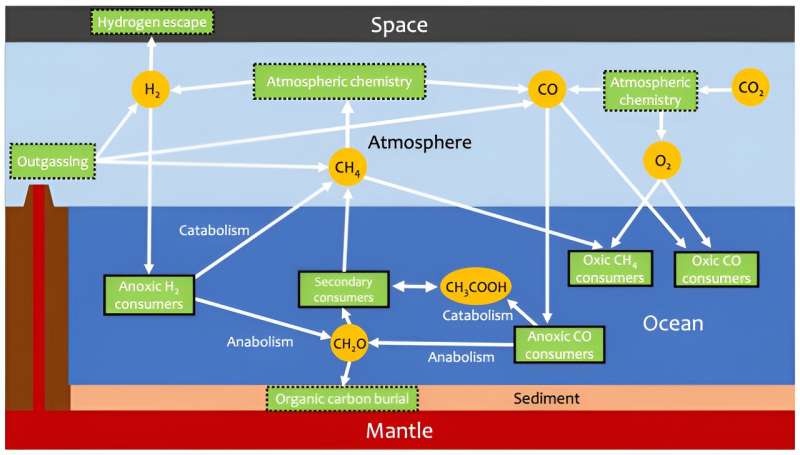
Will we know if TRAPPIST-1e has life? (Image Credit: Phys.org)

The search for extrasolar planets is currently undergoing a seismic shift. With the deployment of the Kepler Space Telescope and the Transiting Exoplanet Survey Satellite (TESS), scientists discovered thousands of exoplanets, most of which were detected and confirmed using indirect methods.
But in more recent years, and with the launch of the James Webb Space Telescope (JWST), the field has been transitioning toward one of characterization. In this process, scientists rely on emission spectra from exoplanet atmospheres to search for the chemical signatures we associate with life (biosignatures).
However, there’s some controversy regarding the kinds of signatures scientists should look for. Essentially, astrobiology uses life on Earth as a template when searching for indications of extraterrestrial life, much like how exoplanet hunters use Earth as a standard for measuring “habitability.”
But as many scientists have pointed out, life on Earth and its natural environment have evolved considerably over time. In a recent paper posted to the arXiv preprint server, an international team demonstrated how astrobiologists could look for life on TRAPPIST-1e based on what existed on Earth billions of years ago.
The team consisted of astronomers and astrobiologists from the Global Systems Institute, and the Departments of Physics and Astronomy, Mathematics and Statistics, and Natural Sciences at the University of Exeter. They were joined by researchers from the School of Earth and Ocean Sciences at the University of Victoria and the Natural History Museum in London.
The paper that describes their findings, “Biosignatures from pre-oxygen photosynthesizing life on TRAPPIST-1e,” will be published in the Monthly Notices of the Royal Astronomical Society.
The TRAPPIST-1 system has been the focal point of attention ever since astronomers confirmed the presence of three exoplanets in 2016, which grew to seven by the following year. As one of many systems with a low-mass, cooler M-type (red dwarf) parent star, there are unresolved questions about whether any of its planets could be habitable. Much of this concerns the variable and unstable nature of red dwarfs, which are prone to flare activity and may not produce enough of the necessary photons to power photosynthesis.
With so many rocky planets found orbiting red dwarf suns, including the nearest exoplanet to our solar system (Proxima b), many astronomers feel these systems would be the ideal place to look for extraterrestrial life. At the same time, they’ve also emphasized that these planets would need to have thick atmospheres, intrinsic magnetic fields, sufficient heat transfer mechanisms, or all of the above. Determining if exoplanets have these prerequisites for life is something that the JWST and other next-generation telescopes—like the ESO’s proposed Extremely Large Telescope (ELT)—are expected to enable.
But even with these and other next-generation instruments, there is still the question of what biosignatures we should look for. As noted, our planet, its atmosphere, and all life as we know it have evolved considerably over the past 4 billion years. During the Archean Eon (ca. 4 to 2.5 billion years ago), Earth’s atmosphere was predominantly composed of carbon dioxide, methane, and volcanic gases, and little more than anaerobic microorganisms existed. Only within the last 1.62 billion years did the first multi-celled life appear and evolve to its present complexity.
Moreover, the number of evolutionary steps (and their potential difficulty) required to get to higher levels of complexity means that many planets may never develop complex life. This is consistent with the Great Filter Hypothesis, which states that while life may be common in the universe, advanced life may not. As a result, simple microbial biospheres similar to those that existed during the Archean could be the most common. The key, then, is to conduct searches that would isolate biosignatures consistent with primitive life and the conditions that were common to Earth billions of years ago.
As Dr. Jake Eager-Nash, a postdoctoral research fellow at the University of Victoria and the lead author of the study, explained to Universe Today via email:
“I think the Earth’s history provides many examples of what inhabited exoplanets may look like, and it’s important to understand biosignatures in the context of Earth’s history as we have no other examples of what life on other planets would look like. During the Archean, when life is believed to have first emerged, there was a period of up to around a billion years before oxygen-producing photosynthesis evolved and became the dominant primary producer, oxygen concentrations were really low. So if inhabited planets follow a similar trajectory to Earth, they could spend a long time in a period like this without biosignatures of oxygen and ozone, so it’s important to understand what Archean-like biosignatures look like.”
For their study, the team crafted a model that considered Archean-like conditions and how the presence of early life forms would consume some elements while adding others. This yielded a model in which simple bacteria living in oceans consume molecules like hydrogen (H) or carbon monoxide (CO), creating carbohydrates as an energy source and methane (CH4) as waste. They then considered how gases would be exchanged between the ocean and atmosphere, leading to lower concentrations of H and CO and greater concentrations of CH4. Said Eager-Nash:
“Archean-like biosignatures are thought to require the presence of methane, carbon dioxide, and water vapor would be required as well as the absence of carbon monoxide. This is because water vapor gives you an indication there is water, while an atmosphere with both methane and carbon monoxide indicates the atmosphere is in disequilibrium, which means that both of these species shouldn’t exist together in the atmosphere as atmospheric chemistry would convert all of the one into the other, unless there is something, like life that maintains this disequilibrium. The absence of carbon monoxide is important as it is thought that life would quickly evolve a way to consume this energy source.”
When the concentration of gases is higher in the atmosphere, the gas will dissolve into the ocean, replenishing the hydrogen and carbon monoxide consumed by the simple life forms. As biologically produced methane levels increase in the ocean, it will be released into the atmosphere, where additional chemistry occurs, and different gases are transported around the planet. From this, the team obtained an overall composition of the atmosphere to predict which biosignatures could be detected.
“What we find is that carbon monoxide is likely to be present in the atmosphere of an Archean-like planet orbiting an M-Dwarf,” said Eager-Nash. “This is because the host star drives chemistry that leads to higher concentrations of carbon monoxide compared to a planet orbiting the sun, even when you have life-consuming this [compound].”
For years, scientists have considered how a circumsolar habitable zone (CHZ) could be extended to include Earth-like conditions from previous geological periods. Similarly, astrobiologists have been working to cast a wider net on the types of biosignatures associated with more ancient life forms (such as retinal-photosynthetic organisms). In this latest study, Eager-Nash and his colleagues have established a series of biosignatures (water, carbon monoxide, and methane) that could lead to the discovery of life on Archean-era rocky planets orbiting sun-like and red dwarf suns.
More information:
Jake K. Eager-Nash et al, Biosignatures from pre-oxygen photosynthesising life on TRAPPIST-1e, arXiv (2024). DOI: 10.48550/arxiv.2404.11611
Journal information:
arXiv
Provided by
Universe Today
Will we know if TRAPPIST-1e has life? (2024, April 23)
retrieved 24 April 2024
from https://phys.org/news/2024-04-trappist-1e-life.html
part may be reproduced without the written permission. The content is provided for information purposes only.





